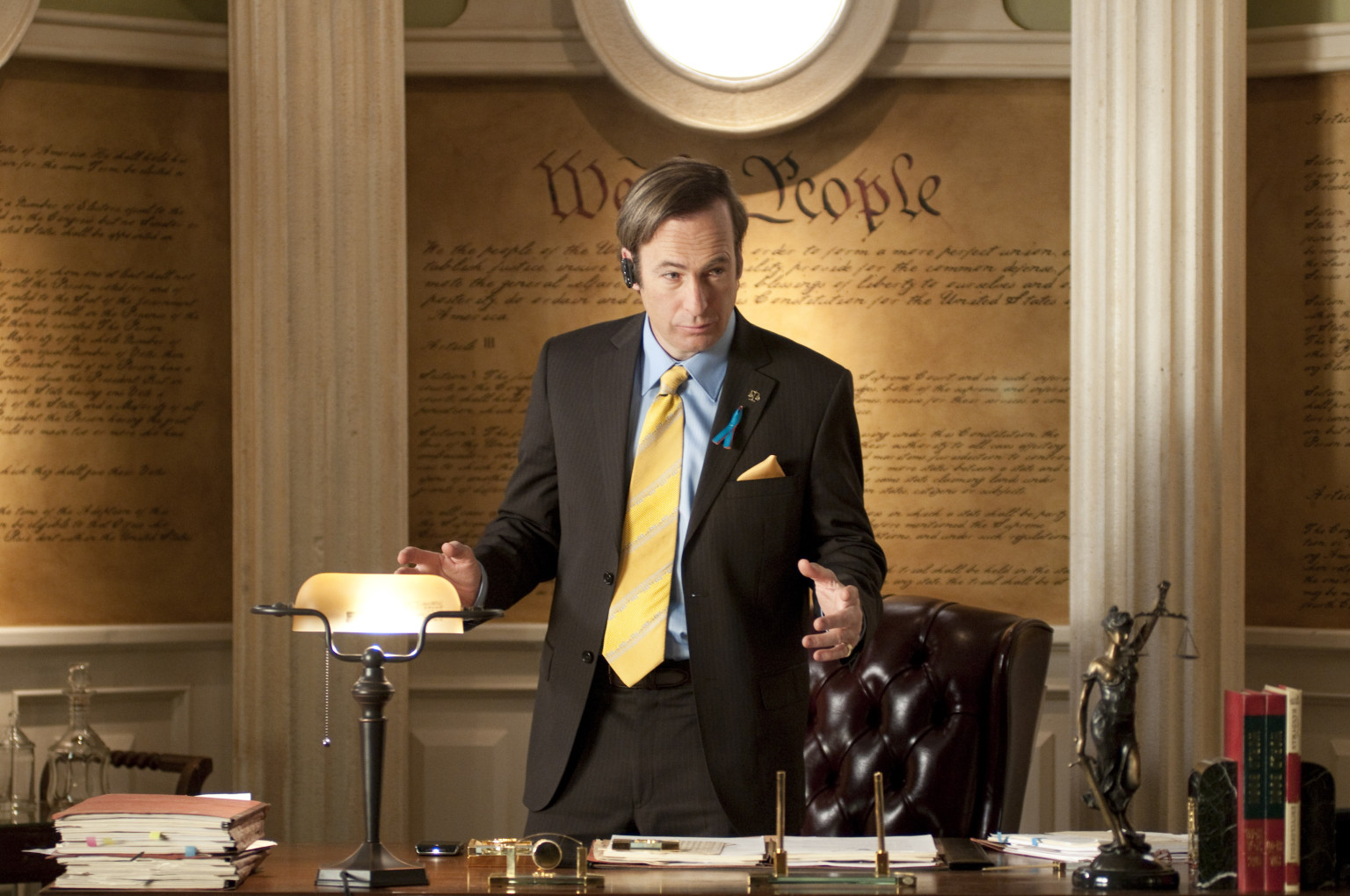The long-anticipated “Breaking Bad” spin-off starring Bob Odenkirk (“Breaking Bad”) as Saul Goodman premiered Feb. 8. “Better Call Saul” is meant to be a prequel to “Breaking Bad” and tells the story of Saul Goodman, a criminal defense lawyer who gains his reputation and fortune from defending or assisting guilty clients in their illegal proceedings.
The opening scene of the series takes on an eerily similar start to those that began many “Breaking Bad” episodes, but the rest of the premiere episode breaks free from the grips of its predecessor to establish the show with its own identity.
Shot in black-and-white, the first scene shows a man—clearly Saul for those who have seen “Breaking Bad”—working at a Cinnabon. Make-up and other indicators show that we are well into the future, and the final seconds of the scene verify as a fact that we have been catapulted into a time when Saul’s law practice is well past its days of fame and fortune. This style of foreshadowing became common in “Breaking Bad” as the pre-opening credits formula, so it is no surprise to see “Better Call Saul” begin in such a way.
The rest of the episode, however, takes the audience well into the past, before “Breaking Bad,” to help establish Saul’s character without any crutch of Walter White (“Breaking Bad’s focal character) or other major “Breaking Bad” characters.
In this retro setting (presumably the ‘90s) Saul, then known as Jim McGill, is an out-of-luck lawyer who struggles to support himself financially. The audience gets a chance to see an immature Saul, who shows potential to become the character we knew previously, while simultaneously showing he has not come anywhere close to his peak confidence and ability as a lawyer.
Serving mostly as a character-building episode, writing and acting are both of the high level we would expect from a spin-off of such a successful show. Odenkirk’s performance reveals an almost-confident lawyer who has fits of nervousness and incompetency while offering other moments of extreme poise and knowledge that make it obvious to the viewers that Jim McGill is indeed capable of becoming Saul.
The writing also forms the character. Dialogue seems unscripted, and its delivery makes the audience feel as though Odenkirk had passed the bar himself. The quality foundation from which Jim’s, or Saul’s, character will continue to grow is certainly one of the great successes of “Better Call Saul” in its premiere episode.
Another exceptional aspect of the show’s earliest stage is that it does not use “Breaking Bad” as a crutch by any stretch of the imagination. Two prominent figures from “Breaking Bad” do make cameos in the first episode, but they are remarkably minimal. Saul’s hitman Mike Ehrmantrout (Jonathan Banks, “Beverly Hills Cop”) has about five seconds of screen time while one of Walt’s drug-ring nemeses, Tuco (Raymond Cruz, “The Closer”) appears for only a second as well.
In its entirety, “Better Call Saul” establishes its main character without completely relying on “Breaking Bad” through quality writing and acting. This is quite a feat for a spin-off, which tend to struggle to differentiate themselves from their predecessors. Additionally, the plot of the first episode allows for a great deal of independence from “Breaking Bad.” By setting the stage the years before the events of “Breaking Bad” take place, the show is afforded a significant amount of time to be its own and not simply a continuation. As was a strength of “Breaking Bad,” silence is perfectly utilized to evoke emotion in the audience as well.
If you liked the pace, intricacies, and potent emotion of “Breaking Bad,” “Better Call Saul” is certainly one for your watch list.











